The best things to do in Seoul, South Korea
Contrasts are everywhere in Seoul: high and low style, hyper-modern and historical, Michelin-starred eateries and traditional fare. The plan: sample a little of everything.
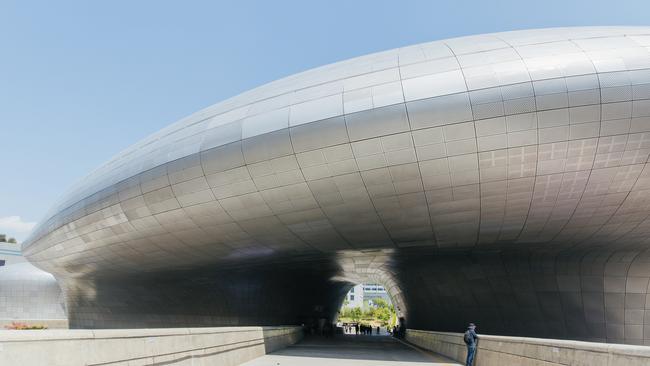
Plot twists, lavish backdrops, and beautiful people in scene-stealing fashion are the elemental tenets of Korean television series. Arriving at Josun Palace, a magnetic hotel in Seoul’s Gangnam district, was tantamount to stumbling onto the set of a modern-day K-drama. Well-heeled Seoulites with poreless skin were grazing and gossiping in the hotel’s lofty lounge. Around them swirled mirrored walls, ornamental screens and furnishings upholstered in jewel-toned fabrics. Nearby, happy families skittered to private gatherings, inquisitive TikTokers admired edgy art, while other habitués picked up elaborate cakes from an in-house bakery. Outside the hotel’s windows, the city appeared like a never-ending diorama composed of white matchsticks.
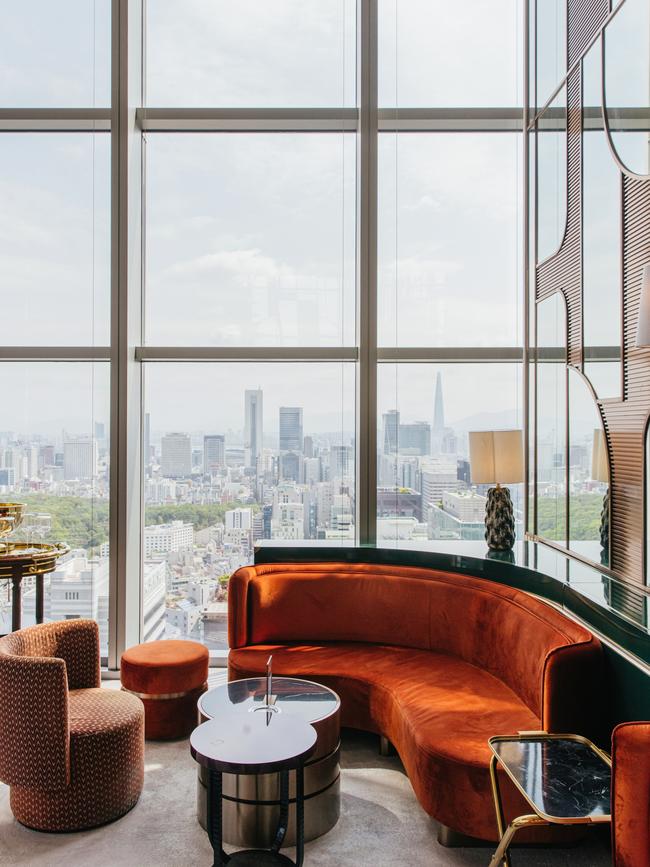
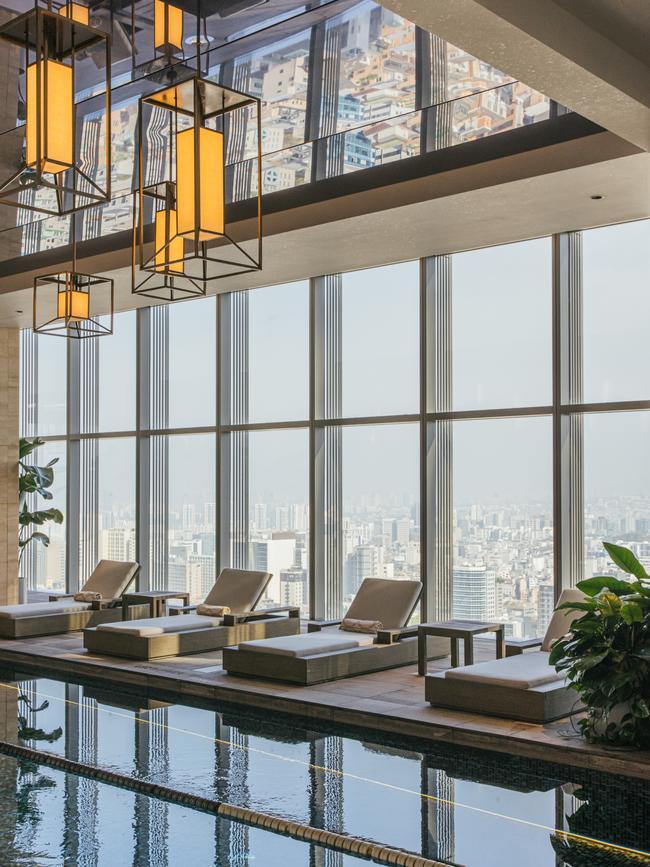
Nothing prepares you for the propulsive energy of Seoul. A metropolis of almost 10 million citizens, the South Korean capital crackles with verve and vibrancy. It’s sprawling, too, with the storied Han River bisecting north and south, and 25 autonomous districts, each with its own allurements. Jongno is the unmissable cultural hub with ornate palaces and museums. Gangnam is a style mecca jam-packed with skyscrapers, nightclubs and ritzy stores. Myeongdong, a shopping and eating destination, teems with K-beauty, street-food stalls and fried-chicken purveyors. Hongdae, the location of several universities, offers indie cafés, karaoke bars and street performers aspiring to K-pop stardom. And Itaewon is a cosmopolitan neighbourhood with a Brooklynesque vibe.
Navigating a mega-city involves decisive planning. As a cultural, culinary and aesthetic juggernaut, Seoul needs to be carved into small digestible bites for visitors. As I discovered the hard way, Google Maps is not reliable here. One evening, I was 45 minutes late for a reservation at a fashionable bar and the owner was so incensed he banned me in perpetuity – luckily there are countless other opportunities for revelry in this city. Local apps Naver and Kakao are mandatory for real-time information and directions. Where Google Maps does come in handy, though, is its translation feature with text-to-speech support for communicating with those who don’t speak English.
Designs of the times
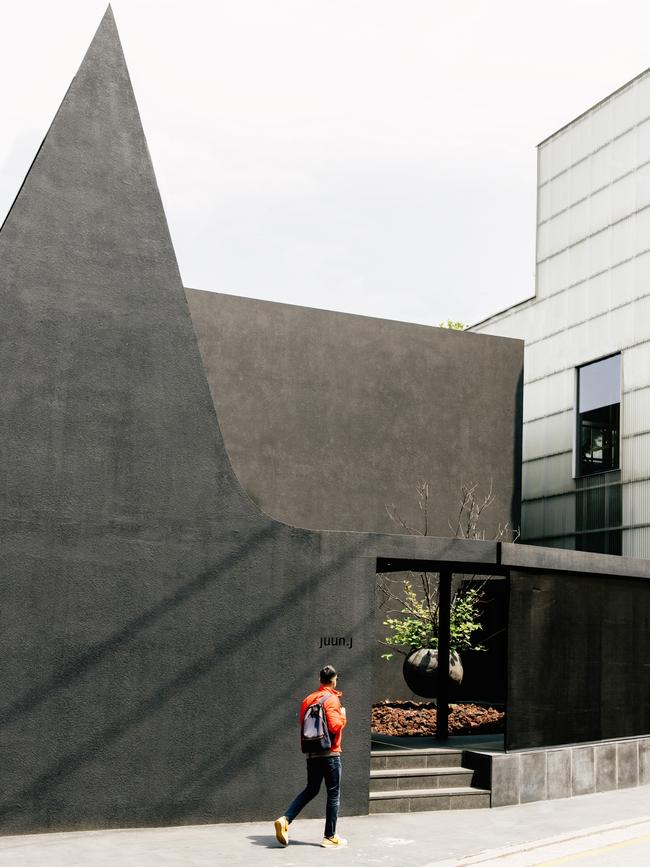

With pagoda-style palaces brushing up against leading-edge galleries, Buddhist temples beaming alongside commercial skyscrapers, and centuries-old hanok dwellings everywhere you look, Seoul is a beguiling mix of atavistic and futuristic elements. The city is also a locus of civic innovation, where a one-time overpass has been shrewdly retrofitted into an urban oasis garlanded with plants, and where clear water is piped into a stream that flows through the heart of the city.
Arguably the most startling structure in the city is Dongdaemun Design Plaza, a free-flowing aluminium marvel that resembles a spaceship. Designed by the late architect Zaha Hadid, and unveiled in 2014, DDP captivates with its complex geometry and warren of galleries, stores and event spaces. Its trippy, mushroom-like form pulsates with multicoloured LED lights in the evenings. Not far from DDP is Dongdaemun Gate, part of a fortress wall built in 1398 and restored over the years. It’s a two-storey structure with a traditional hip-and-gable roof – and a doorway to another era. In Dongdaemun, the interplay of then and now, illustrious and industrious, is a memorable one.
Completed in 2017, Lotte World Tower has a sleek, smooth and tapered design that evokes Korean ceramics. The glass-bottomed deck, reached via a Willy Wonka-like elevator, hovers 497 metres above ground level to reveal vertiginous vistas. Another contemporary wonder is Seoul New City Hall whose cresting wave-style structure towers above the older Seoul Metropolitan Library building. Inside is an enormous vertical garden, photography gallery and a striking installation formed from a cluster of translucent spheres.
No matter which vantage point I viewed it from, I was invariably taken by Saemoonan Church in Jongno. Its low-slung, curvilinear façade is purported to conjure a mother’s outstretched arms extended towards heaven. Still on religious architecture, the four-year-old Seosomun Shrine History Museum is a powerful and poetic ode to Catholic martyrdom. Among its most meditative spaces is a rectangular plaza composed of tall red-brick walls and arrayed with wooden forms. It deftly unites earth and sky – a moving way to memorialise those who perished generations ago.
Not all of Seoul’s design highlights were so monumental – I was equally mesmerised by small gestures. The Juun J flagship store in Gangnam, filled with avant-garde streetwear, has a sombre black exterior and pointy shape that recalls a witch’s hat. Namusairo, a café in the Jongno district that occupies a renovated hanok, or traditional house, is a tranquil environment for imbibing iced Americanos – the preferred caffeinated drink. “Hot or cold?” I was often asked by baristas. Speaking of hanoks, nearby is Bukchon Hanok Village, a hilly, hallowed locality of almost 900 classic homes with overhanging roofs, wooden frameworks and polychromatic patterns.
Blasts from the past

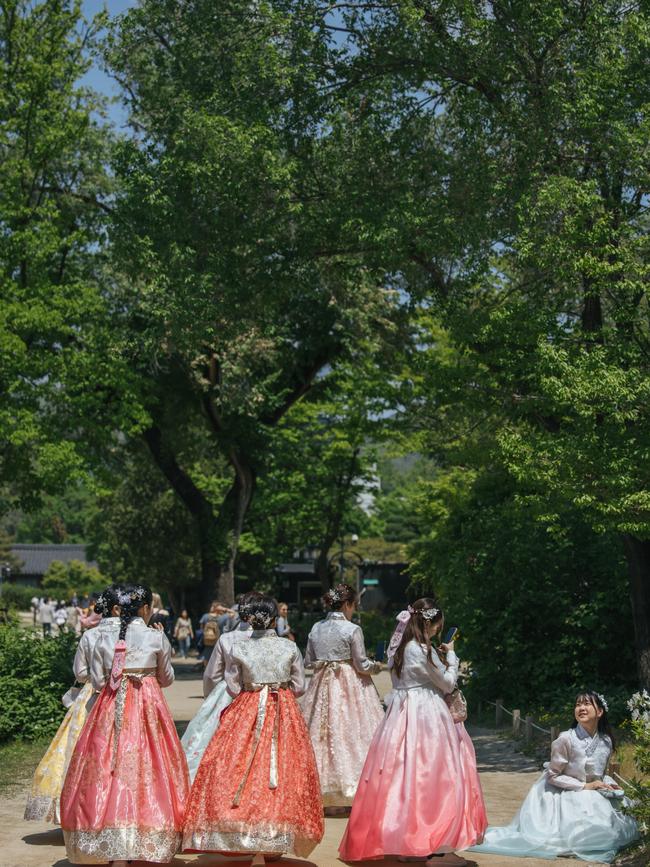
Rich, complex and juicy, the history of the Korean peninsula reaches back over 2000 years. One of the leading places to get up to speed is the National Museum of Korea in the Yongsan district. This vast, imposing institution has more than 12,000 artworks and artefacts on display, from prehistory all the way to the Korean Empire period (1897-1910). Prioritise the Joseon Dynasty (1392-1897) whose prolific influence can still be identified today. During that period, Confucianism intertwined with Buddhist and Daoist ideals to produce exceptional painted screens, porcelain ritual vessels and lacquered wood furnishings and accessories.
Armed with this backstory, I better appreciated Seoul’s five royal palaces. Each one served as the country’s seat of power at one stage. Gyeongbokgung is the oldest and most visited. Erected by King Taejo in 1395, it has been remade several times, including following the Japanese invasions. Tour the palace grounds, observe the changing of the guards, and hail the young crowds in rented hanboks, traditional attire comprising tight-fitting cropped jackets and bell-shaped skirts. Though they wielded smartphones, I could imagine them as players in court intrigue.
Changdeokgung is worth a visit, too, if only for its terraced gardens and remnants of exquisite furniture. Though temporarily closed for renovations, the Korea Furniture Museum in Seongbuk is another revelatory stop – with artful displays of Joseon dynasty wares arrayed with mother of pearl or tortoise shell. To combine history and hiking, walk along the Seoul City Wall, which dates back to 1396, for jaw-dropping glimpses of the megapolis.
State of the arts
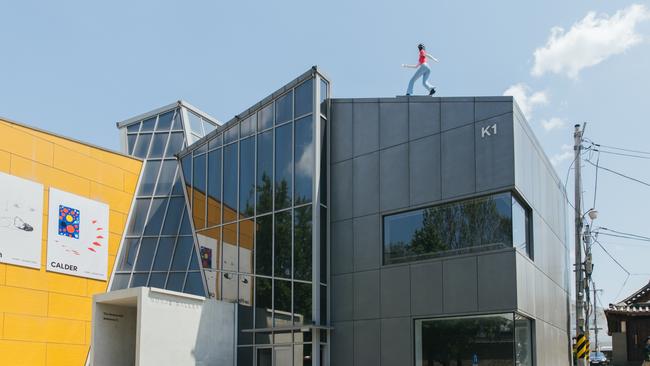
With cashed-up collectors, world-class museums and a flourishing gallery scene, Seoul has morphed into a global art capital. International galleries such as König Galerie, Perrotin and Pace have outposts here, while the prestigious art fair Frieze hosted its first major event last year. “We’ve seen a surge of internationally educated, tech-savvy young collectors who are unafraid to get what they want,” said Bo Young Song, vice president of Kukje Gallery. Other compelling cutting-edge galleries include PKM, Hakgojae, and Arario Gallery.
In terms of larger institutions, the National Museum of Modern and Contemporary Art, and SeMa, the Seoul Museum of Art, both offer a fount of multimedia works scattered over floors and various branches. The Leeum Museum of Art in Itaewon spans three buildings, each designed by a bold-faced architect, Mario Botta, Jean Nouvel and Rem Koolhaas. Museum 2, a blocky glass and stainless steel structure by Nouvel, houses an East meets West collection of notable Korean artists, including Kim Whan-ko and Nam June Paik, who stand shoulder to shoulder with the likes of Andy Warhol and Francis Bacon.
A feast for gourmands


Seoul’s culinary scene is piquant and diverse – going way beyond pickled cabbage there is everything from knife-cut noodles to soy-marinated crab; Korean fried chicken and pork barbecue to vegetable-centric Buddhist temple food; cinnamon pancakes to sweet rice cakes. At Jin-Ok-Hwa, a homely eatery in Jongno that has been trading for more than 40 years, the signature dish is dak hanmari, a comforting soup made from a whole chicken that is simmered at your table, and paired with dipping sauces, noodles and kimchi (don’t forget to serve yourself).
At the higher end is a flock of Michelin-starred restaurants that should be booked way in advance. As the leading exponents of modern Korean fare, blending local flavours with Western techniques, eateries including Mingles, Jungsik and Mosu have devoted followings. Mosu in Itaewon is the only three-star venue in the city, a reflection of its virtuosic chef Sung Anh. “Growing up in the United States, I never thought kimchi would be cool,” Anh told me from the kitchen of his light-filled fine-diner. After stints in the US, Europe and Hong Kong, Anh’s menus shine with cosmopolitan flair and playful conceits. “I want to have my own identity and no boundaries,” he said. That might mean abalone tacos, slivers of burdock root with sweet soy, and sublime wheat noodles served chilled.
Another restaurant that fuses intimacy and originality is Evett from Australian chef Joseph Lidgerwood. The Tasmanian native opened his 14-seat diner, wrapped in white oak, in Gangnam in 2018. “I wanted to dive deeper into Korean cuisine,” he told me. “It’s so much more than bibimbap and soju.” Lidgerwood avoids the trappings of fine-dining (caviar, truffles, noodles) to focus on local ingredients – a bounty of vegetables and pristine seafood including delicacies such as meongge or sea pineapple, its orange flesh served raw and tasting of the ocean. Lidgerwood also relies on foraging, fermentation and making his own makgeolli (unfiltered rice wine).
Seoul’s coolest cocktail dens are as experimental as the city’s outstanding restaurants. At Bar Cham in Jongno, mixologist Lim Byung-jin showcases native spirits. One bracing confection paired black tea-infused sonbi (gin) with kombucha, honey syrup and lemon. Tucked away in the basement of the Four Seasons Hotel in Gwanghwamun, Charles H is an opulent speakeasy with gilded interiors, vintage decanters and clever drinks – a Mojito Colada is a decadent hybrid with a vivid green appearance. And Alice Cheongdam combines Lewis Carroll-inspired interiors with fantastical libations. For boundary-pushing desserts, head to Nudake. Launched by eyewear brand Gentle Monster, the chain of pastry stores is known for its lab-like interiors and recherché concepts, like a black croissant infused with squid ink.
Shop till you K-pop
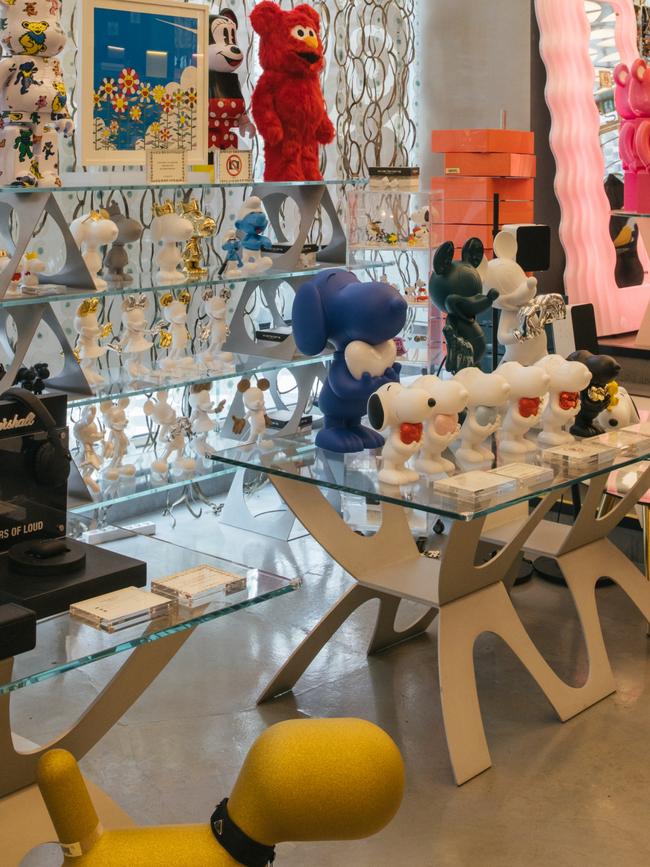
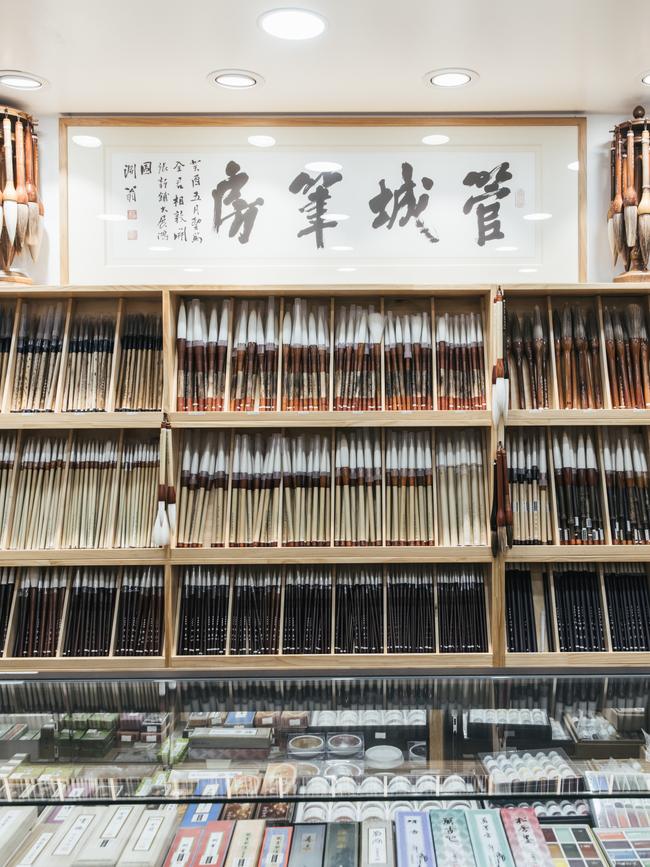
Retail therapy reaches its apogee in Seoul. The most glittering emporium is Shinsegae, whose flagship in Myeongdong offers everything from yellow chamoe melons to yellow-gold Chaumet jewellery. The Hyundai in Yeouido is a dapper mall with 12 floors, almost 600 buzzing stores and high-concept design incorporating a waterfall and ample greenery. Another popular mall is Starfield Coex in Gangnam, a repository of trend-setting brands. And the most beautiful retailer of beauty? Sulwhasoo in Gangnam. The Korean skincare brand tapped Shanghai-based Neri & Hu to wrap its lotions and potions in an eye-catching lattice of brass rods.
Meanwhile, Apgujeong and Cheongdam are the city’s toniest shopping districts and home to a bevy of international brands, including Louis Vuitton whose sculptural flagship was hatched by Frank Gehry and Peter Marino. Still in Gangnam, I was bowled over by the brilliantly curated offerings at Boon the Shop, a gleaming marble bunker also designed by Marino. And I was awed at 10 Corso Como in Cheongdam, a satellite of the Milan retailer. It’s the place to nab Fornasetti vessels, Kaws action figures and a tasty risotto alla milanese in the cafe.
For an alternative retail experience, Insadong brims with vintage galleries, ceramics stores and charming tea houses. At Myung Sin Dang, a shop filled with calligraphy pens, art supplies and paper products, I stocked up on hanji notebooks made from mulberry bark. For a wide-ranging curation of Korean antiques, including porcelain oil bottles, brass bowls and wooden buddhas, Tong-In Store is hard to beat. In Insadong, contemporary artists are breathing new life into traditional ceramics, from luminescent celadon to gleaming white porcelain, in sensuous forms. Ssamziegil, meanwhile, is a multi-storey complex that houses over 70 shops.
Where to stay

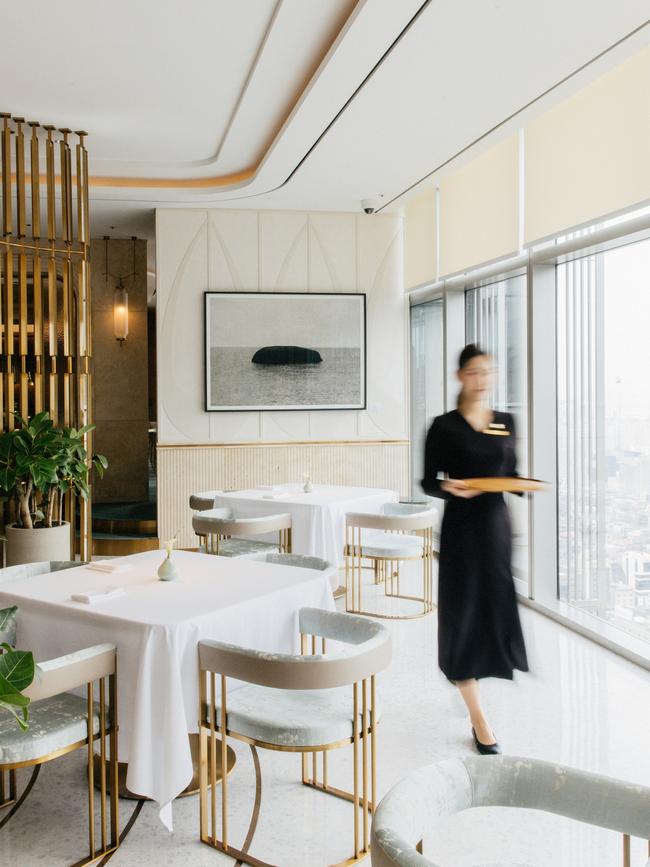
Josun Palace: With luscious colours, geometric patterns, and elevated materials, this super-luxe lodging in Gangnam is emblematic of Seoul’s grandeur. For the first South Korean property in Marriott Bonvoy’s Luxury Collection, Monaco-based studio Humbert & Poyet made over one of Seoul’s stateliest hotels. On arrival, guests are greeted with an incense-like signature fragrance and a massive Hellenistic statue by artist Daniel Arsham. Once you’ve checked in on the velvet-lined 25th floor, you’ll want to explore one of the inviting dining options, including 1914 Lounge & Bar, Cantonese fine-diner The Great Hong Yuan, and modern Korean eatery Eatanic Garden. Or you could bounce to the fitness club and indoor heated pool, both of which offer pulse-quickening views. Cinematic vistas continue in the 254 guest rooms. Sequestered in my impressively designed suite I became obsessed with sanitising – my clothing. The closet is equipped with an ingenious “air-dresser clothing care system” to clean and refresh your garments. What’s nearby? Starfield Coex Mall, eighth-century Buddhist temples and the Royal Tombs of the Joseon Dynasty. Staying here will feel palatial, too.
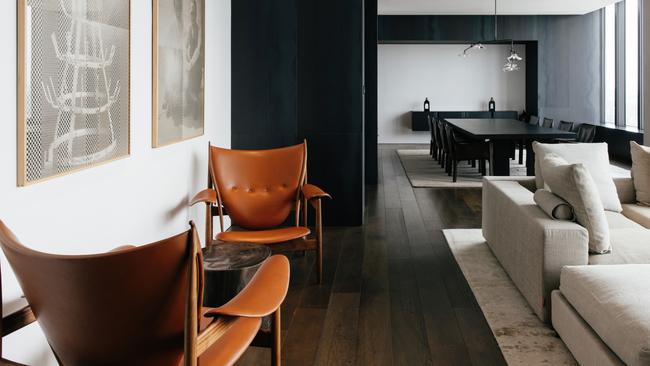
JW Marriott Hotel Seoul: Situated south of the Han River, alongside a department store and above a metro station in Central City, this 379-room stay is impeccably located. A panoply of dining outlets await including the blush-coloured lounge for pork dumplings and afternoon tea. At Tamayura, chef Tae Un Woo – laser-focused with a seraphic mien – is a whizz at superb kaiseki cuisine. The Margaux Grill is devoted to wood-fired fare, while Mobo Bar serves stellar cocktails in a leafy and luminous setting. Avid gymgoers would relish staying here: the fitness club spans three levels with a jogging track, basketball court and six-lane pool. Guest rooms are simply decorated with writing desks, window-adjacent banquettes and marble bathrooms. A pair of penthouse suites, with multiple rooms, private elevators and a duplex layout, resemble swanky apartments. One of them has a karaoke room for belting out Blackpink tunes.
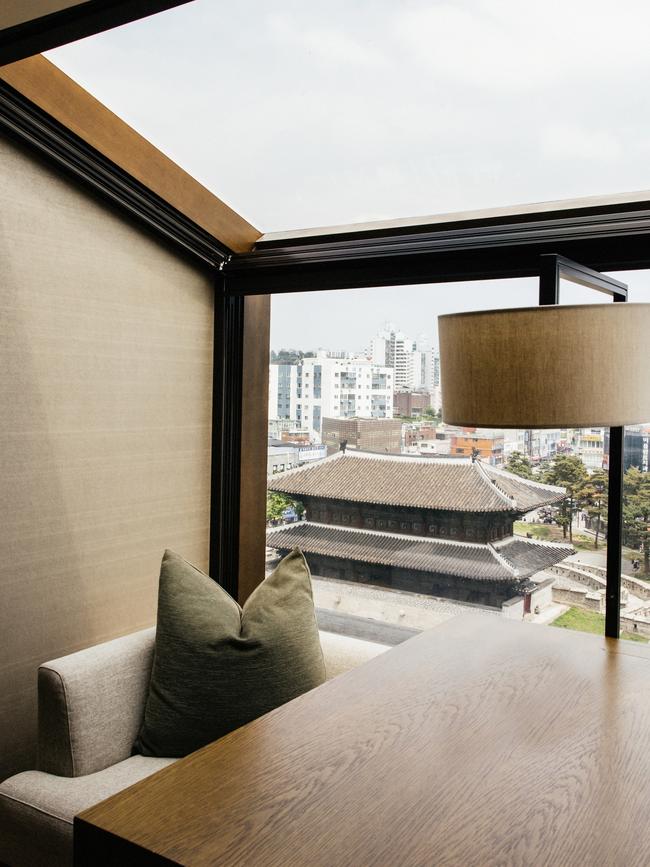

JW Marriott Dongdaemun Square: Located opposite the Great East Gate, a national treasure dating back to the 14th century, this 170-room hotel radiates with good poongsu – the Korean version of feng shui. Dongdaemun is beloved for its lively malls, indoor markets including Gwangjang, and Cheonggyecheon Stream. Shopping is this area’s defining gesture. Once you’ve had your fill, retreat to the hotel’s serene spaces, including an indoor pool, L’Occitane spa and a refined lounge serving Champagne-infused tipples. At dusk, make a beeline for rooftop Griffin Bar for cocktails on its outdoor terrace and live music. The ancient gate is best observed from one of the hotel’s 15 Sky Suites with glass-encased private verandahs and intuitive design. A selection of hangwa, traditional confections artfully arranged in a box, is a sweet welcome gift.
Getting there
Qantas operates three-weekly flights from Sydney to Seoul’s Incheon Airport, with 28 lie-flat business suites on its A330 aircraft the seats to book.
For more information on travel to South Korea, see english.visitkorea.or.kr. The writer travelled as a guest of Qantas and Marriott Hotels.

To join the conversation, please log in. Don't have an account? Register
Join the conversation, you are commenting as Logout